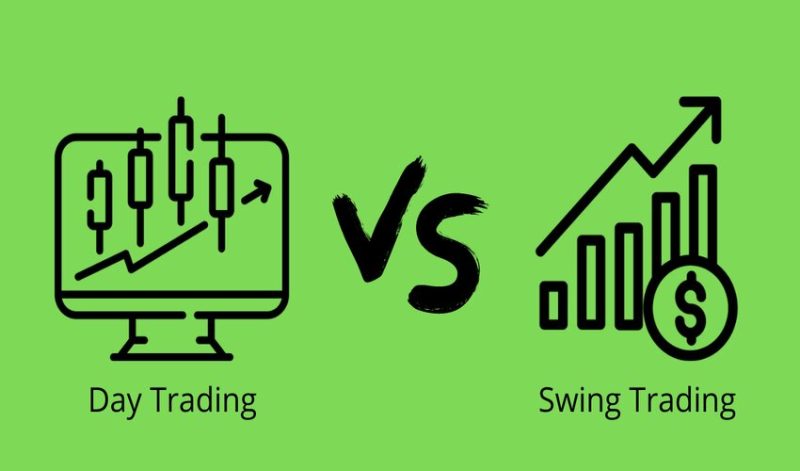In the fast-paced world of financial markets, traders often find themselves at a crossroads when deciding on a trading strategy. Two popular approaches that frequently dominate the conversation are day trading and swing trading. Each strategy has its own set of advantages and drawbacks, making it crucial for traders to carefully consider which one aligns with their lifestyle and goals. In this article, we’ll explore the key differences between day trading and swing trading, helping you make an informed decision about your trading style. But before diving into the details, let’s briefly mention a powerful online trading platform that can aid traders in implementing their chosen strategy effectively. If you are interested in Bitcoin investment, you may visit this Site.
Exploring Online Trading Platforms
An online trading platform presents traders with a diverse selection of trading instruments, ranging from cryptocurrencies and stocks to commodities. These platforms come equipped with advanced tools and features designed to streamline trade execution. Regardless of whether you opt for day trading or swing trading, such online platforms prove to be indispensable in your trading endeavors, providing real-time market data, comprehensive analysis tools, and secure trading environments.
Day Trading: Seizing Opportunities in Real-Time
The Fast-Paced World of Day Trading
Day trading is a high-intensity trading strategy where traders aim to capitalize on short-term price movements within the same trading day. It involves making multiple trades throughout the day, with positions typically being opened and closed within minutes or hours. Day traders are often drawn to the excitement of capturing quick profits, but this strategy demands constant attention and rapid decision-making.
Advantages of Day Trading
- Quick Profits: Day trading offers the potential for rapid gains, as traders aim to profit from short-term price fluctuations.
- No Overnight Risk: Day traders close all their positions before the market closes, eliminating the risk of overnight price gaps.
- High Trading Volume: With numerous trades in a single day, day traders can benefit from increased liquidity and tighter spreads.
Drawbacks of Day Trading
- Stress and Pressure: Day trading can be emotionally taxing, as traders must make quick decisions and manage the stress of intraday volatility.
- Time-Intensive: Day trading demands a significant amount of time and attention, making it challenging for those with busy schedules.
- High Costs: Frequent trading can lead to increased transaction costs due to commissions and spreads.
- Swing Trading: Riding the Waves of Price Trends
The Patient Approach of Swing Trading
Swing trading takes a more relaxed approach compared to day trading. Swing traders aim to profit from price swings within a broader trend, which may last from a few days to several weeks. This strategy allows traders to take advantage of medium-term price movements without the constant stress of intraday trading.
Advantages of Swing Trading
- Less Stress: Swing trading provides a more relaxed trading experience, as it doesn’t require constant monitoring of the markets.
- Lifestyle Flexibility: Swing traders have the flexibility to balance their trading activities with other commitments, making it suitable for those with busy lifestyles.
- Capturing Trends: Swing trading allows traders to ride the waves of larger price trends, potentially yielding substantial profits.
Drawbacks of Swing Trading
- Overnight Risk: Unlike day traders, swing traders hold positions overnight, exposing them to the risk of price gaps when the market opens.
- Slower Gains: While swing trading offers the potential for significant profits, it typically takes longer to realize these gains compared to day trading.
- Market Analysis: Swing traders need to conduct in-depth market analysis to identify and capitalize on potential swing points.
Choosing Your Trading Strategy
Factors to Consider
When deciding between day trading and swing trading, traders should take into account various factors:
- Time Availability: Consider how much time you can dedicate to trading. Day trading requires more time during market hours, while swing trading is more flexible.
- Risk Tolerance: Assess your risk tolerance, as day trading can be more emotionally taxing due to its fast-paced nature.
- Capital: Determine how much capital you can allocate to trading, as day trading may require larger initial investments to achieve significant profits.
- Market Analysis: Evaluate your ability to conduct market analysis and identify potential trade setups.
- Lifestyle: Consider your lifestyle and other commitments to ensure that your chosen trading strategy aligns with your daily routine.
Final Thoughts
In the world of trading, choosing the right strategy is a pivotal decision that can greatly impact your success and overall well-being. Day trading and swing trading both offer unique opportunities and challenges, and there is no one-size-fits-all answer. The key is to align your trading strategy with your lifestyle, risk tolerance, and goals. Regardless of whether you opt for day trading or swing trading, platforms can provide the tools and resources needed to make informed decisions and execute trades effectively. Remember that success in trading often comes with experience, discipline, and a well-thought-out plan, so take your time to develop your skills and strategies. Ultimately, the choice between day trading and swing trading should reflect your individual circumstances and preferences. With the right strategy and dedication, you can navigate the financial markets and work towards achieving your trading objectives.

Aimee Garcia is a senior editor at ReadDive. She has 5+ years of experience in Digital Marketing. She has worked with different IT companies.





